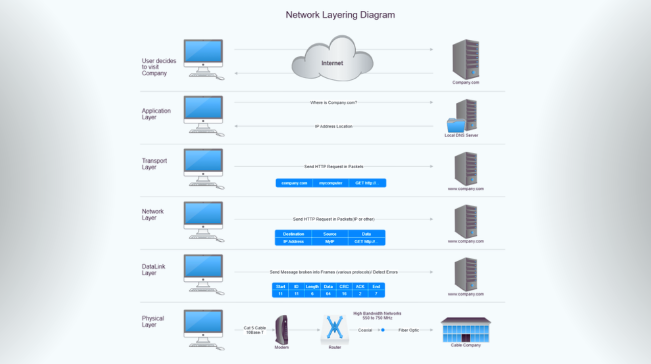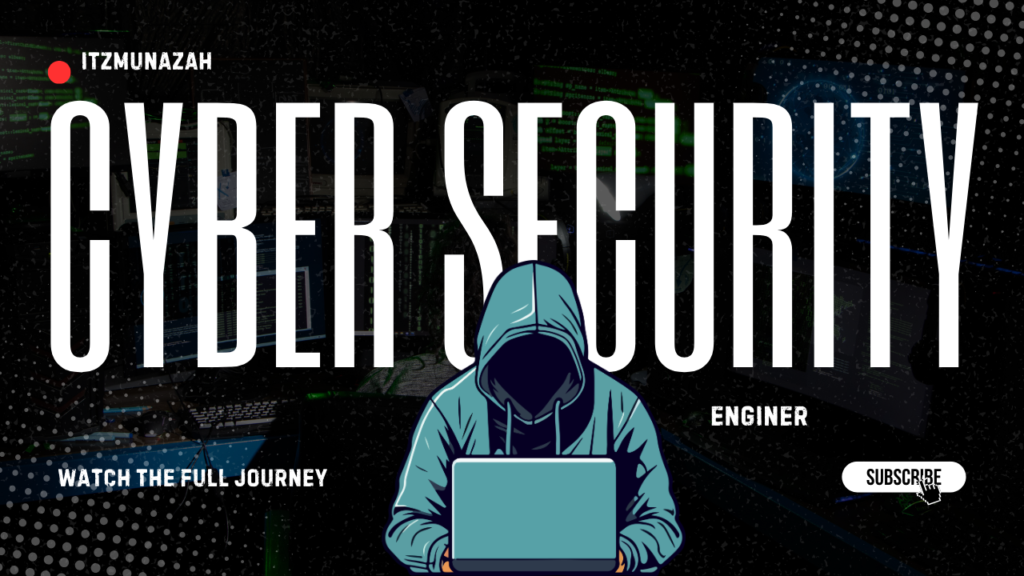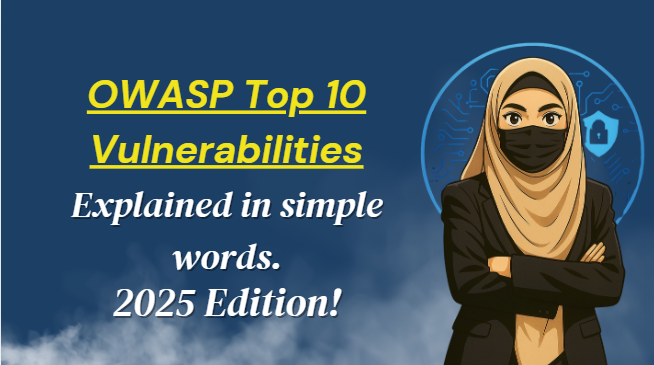Main Cybersecurity Tools & Protection System
All Security tools used in Cyber Security!
Cyber security Tools:
- Firewalls, is like a security guard between your computer and the internet, it check every piece of data trying to come in or come out and blocks anything suspicious. For example, every companies have firewall to protect their servers from hackers, even your home Wi-Fi router have basic firewall.
- IDS/IPS (Intrusion Detection/Prevention Systems),
- IDS means Intrusion detection system, which detects all bad activities.
- IPS means Intrusion prevention system, which stops all bad activities.
Its like the IDS is a security camera which can see and detect the threat while the IPS is like a automatic door that’s shut when danger is seen. For example in real world, these cyber security tools Used in company networks to detect and stop hackers before they can steal data.
- Antivirus/Anti-malware, is a software that find or remove virus or malware from your computer. For example, everyone should use antivirus – for example, Windows Defender is a free built-in antivirus in Windows 10/11 OS (operating systems).
- Encryption Basics (Symmetric/Asymmetric), encryption turns your readable data into unreadable code so that hackers can’t understand it when they steal data.
There are basically two types of encryption, In Symmetric only one key is used to lock and unlock data while in Asymmetric one key is used to lock (public key) while the other key is used to unlock data (private key).
For example, WhatsApp uses encryption so your chats can’t be read by anyone, even WhatsApp. Also Websites use encryption (you see https/ in the address bar).
- Multi-Factor Authentication , it is cybersecurity tool for more protection of your accounts. MFA add one extra step to login so if someone steal your password they still can’t login your account. For example, when you login to facebook with you correct password they still sends you a two steps authentication or MFA code on your SIM message, that’s MFA. Instagram or gmail also used MFA.
- VPNs, (virtual private network), the vpns changes your IP address and hides your internet activity, so that no one can track like what websites you are visiting and what’s your location. For example, you’re using public Wi-Fi in a café, hackers can spy on you. But if you use a VPN, they see nothing, so always use secure VPN when using public Wi-Fi. OR You want to watch Netflix USA shows in Pakistan but its blocked in Pakistan so VPN can make it seem like you are in the US.
Cyber security Basic Tools – Summary Table
| Cybersecurity Tools | What It does? | Simple Meanings | Use in real world |
| Firewall | Protect from bad internet traffic and blocks it. | its kind of security guard at main gate. | Built into routers, protects networks |
| IDS/IPS | IDS detects, IPS blocks attacks. | Its kind of a CCTV camera (IDS) and auto lock is door (IPS) | Used in company networks |
| Antivirus | Scans and removes malware | Like cleaning software for your PC | Windows Defender, Avast, etc. |
| Encryption | Converts data into secret code | Like locking info in a safe box | WhatsApp, HTTPS websites |
| Symmetric | One key to lock/unlock | You and friend share same key | Faster, used for local data |
| Asymmetric | Two keys: public & private | Lock with public, unlock with private | Used in emails, websites |
| MFA | Adds extra login step | Like fingerprint + password | Used in Gmail, Facebook login |
| VPN | Hides your IP and activity | Like wearing a mask online | Bypass bans, use public Wi-Fi safely |
Network Security & Secure Protocols
This is the foundation of how data travels safely across the internet. Networking is very vast topic but learning of cybersecurity tools will defiantly helps you in better understanding.
Network Basics
- IP Address, is like a home address on internet. Every device has IP address to send and receive data through internet. For example
192.168.1.1 – Your router’s IP142.250.74.78 – Google.com’s IP (These are common not mine) everyone has lil bit different but in same pattern IPs.
- TCP/IP,
· TCP (Transmission Control Protocol) Breaks data into small packets/pieces (A Packet is a small piece of data that is part of a bigger message) and ensures it reaches correctly. It’s a communication rule (protocol) used when devices want to send data reliably over the internet.
· IP (Internet protocol) Sends the packets to the correct destination. For example, you’re sending a message from your phone to your friend’s laptop.
TCP breaks it up → IP sends each piece → Friend’s laptop reassembles it.
– Ports, is like a doors for each room in house, so every service (email, website, video) on internet use separate port, Examples of Ports:
- Port 80 – Websites (HTTP)
- Port 443 – Secure websites (HTTPS)
- Port 22 – SSH (secure remote login)

Network Security
- Perimeter Security, The PS protects the outer side of our networks, its same like as like main door and walls around house protects the whole house, the tools which used for protection is firewalls, routers, IDP/IPS & VPNs.
Example:
A company uses a firewall to block outside hackers from accessing internal servers.
- VLANs, it divides a physical network into virtual separate part. Example:
In a school: - Students are on VLAN 1
- Teachers are on VLAN 2
- Admins on VLAN 3
Even though they all use the same Wi-Fi, their data is kept separate. Usually its fir high end Wi-Fi routers. Its very necessary to understand all the basic cybersecurity tools and familiarize yoursel with terms.
Common Secure Protocols
- HTTPS, It is Secure version of HTTP (website). Encrypts data sent between you and the website. Example: When you log into your bank’s website, it uses HTTPS to keep your login safe.
- SSH, (secure shell) it lets you securely login to another device using internet. Example:
An admin uses SSH to access the company’s Linux/windows operating system server from home without being hacked and without any physical touch.
- SSL/TLS, stands for (Secure sockets layer/ Transport layer security) these are encryption protocols used in HTTPS, email, messaging, etc. TLS is the modern, secure version but HHTP is less secure, easy to attacks. Example, When you open
https://gmail.com, SSL/TLS makes your email login infos encrypt.
Wi-Fi Security
- WEP (wired equivalent privacy), old, weak Wi-Fi security. (can be hacked in minutes).
- WPA (WI-FI protected access), better than WEP, but still weak today.
- WPA2, it is most common security on routers today. Safe if you use a strong password. Its also on our wifi.
- WPA3, Newest and most secure. Harder to crack, even with weak passwords.
Summary Table: Network Security & Secure Protocols
| Topic | What It Means | Real-Life Example |
| IP Address | Internet address of a device | Like your home address online |
| TCP/IP | Sends data in small parts & reassembles it | Sending a WhatsApp message |
| Ports | Doors for different services | Port 443 = secure web browsing |
| Perimeter Security | Protects network edge | Firewalls stop hackers at the door |
| VLANs | Separate networks inside one | School: students vs. admin access |
| HTTPS | Secure websites | Gmail, bank sites |
| SSH | Remote secure login | Admin accessing server |
| SSL/TLS | Encrypts internet traffic | Used in HTTPS |
| WEP | Old Wi-Fi security (unsafe) | Don’t use it! |
| WPA2/WPA3 | Strong Wi-Fi protection | Used in modern routers |

Security Policies, Compliance & Careers
- Basic Security Policies & Best Practices, These are rules companies follow to stay safe from cyber-attacks. Example, don’t install or download any unknown software or app in you systems & repost anything suspicious.
- User Awareness Training, Teaching non-technical staff how to avoid common cyber threats. Like Phishing (fake emails with bad virus links) awareness, & password hygiene (enable MFA). Example, email with bank name and fake link, ask to click on link and enter pin code, trainings helps to spot these attacks.
- Introduction to Compliance, Compliance means following legal & industry rules to protect data.
- GDPR, (General data protection regulation) like websites collect cookies and they ask before collection.
- HIPAA, (Health Insurance Portability and Accountability Act) secures health data.
- PCI-DSS, (Payment Card Industry Data Security Standard) used to secure payment cards details.
Famous Compliance Frameworks:
| Law | Used For | Example |
| GDPR | Protects personal data of EU (European union) citizens | A website must ask permission to collect cookies. |
| HIPAA | Secures health data in the U.S. | A hospital can’t leak your medical report |
| PCI-DSS | Protects card payment info | Online stores must encrypt credit card details |
Careers in Cyber security
There are many roles in cyber security. Here are the main ones:
| Role | What They Do | Type |
| Blue Team | Defend systems (like security guards) | Defensive |
| Red Team | Hack ethically to find weaknesses | Offensive |
| GRC (Governance, Risk, Compliance) | Make sure the company follows rules & stays secure | Policy/Management |
Real-Life Career Examples:
- Blue Team: Security Analyst, SOC Analyst
- Red Team: Ethical Hacker, Penetration Tester
- GRC: Compliance Officer, Risk Manager
“As theoretical parts almost comes to an end, but defiantly we learn daily new terms new techniques because leanings never stops and in cyber security its mandatory
- Malware. Bad software (virus, worm, Trojan, ransomware).
- Phishing/Social Eng. Tricking people.
- DDoS. Crashing websites with fake traffic.
- Brute Force Password guessing attacks.
- Zero-Day Exploiting unknown bugs.
We cover all the basics of Cyber security in 3 days for day 2 visit https://munazajameel.site/basics-of-cyber-security-and-terms/ because after that we will start with practical learning. Follow for more updates. See yaaa!!!



